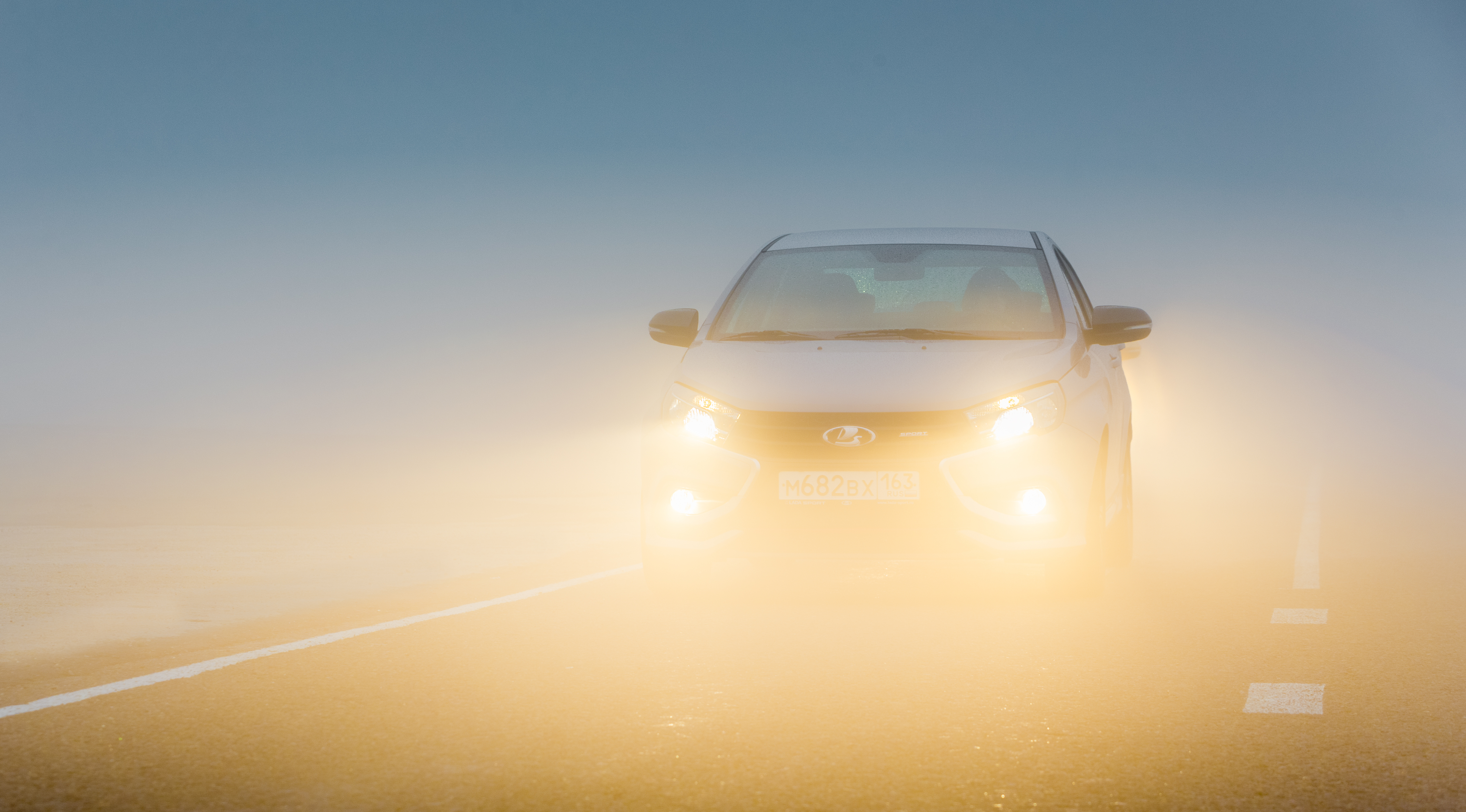Share This Article
By Sahar Adatia and Jimmy Singh.
Fog lights do exactly as they are described – they are designed to be used in foggy conditions that may limit a driver’s vision.
However, they still seem to cause confusion with some drivers.
For a large part, this is because car lights have today come on in leaps and bounds, with drivers now having several options in choosing what vehicle lights to use. These include normal headlights, high beam lights, fog lights or even parking lights.
Some drivers seem to think that if there’s the slightest bit of mist, it’s a good idea to switch on their fog lights.
However, fog lights operate differently from your normal headlights, and other than being designed to be used proactively, should only be switched on if the correct weather conditions are at play.
Let’s further explain…
What Are Fog Lights and How Do They Work?
In order to understand how to use your fog lights correctly, it is firstly important to understand what fog lights actually do.
Unlike your car’s main headlights, which are intended to illuminate the road far ahead, fog lights are designed to brighten the road surface, the curb, shoulder and edges of the road. They don’t necessarily help you see further up the road; rather, they enhance visibility directly in front of you so you can safely move ahead.
As such, fog lights are normally set lower in the front or rear bumpers of a car. They operate independently of the main headlights.
Additionally, they are usually angled downwards at a steeper perspective, and give off a flat horizontal beam that lowers the amount of light reflecting back off the fog. This brings better brightness and visibility.
Fog lights are designed to be used in foggy or rainy conditions that may limit a driver’s vision. They have a limited range so are most effective at low speeds.
Fog lights can be white or a selective yellow.
So, When Should You Switch Your Fog Lights On?
According to the NSW Centre for Road Safety, you can only use your fog lights if driving in fog, mist, or other atmospheric conditions that restrict your visibility.
The use of fog lights is confined to these conditions because under normal conditions, fog lights can easily dazzle other drivers.
This, in turn, can potentially blind them, which can then lead to accidents and collisions with other vehicles or pedestrians. This can be particularly problematic on wet roads.
That said, fog lights can also be switched on in situations where visibility is affected by adverse climatic conditions, whether day or night.
Such circumstances may include during heavy rain storms or snowfall. Even low cloud, smoke and dust may necessitate the need for fog lights to be switched on so that a driver can see more clearly.
Fog lights switched on unnecessarily during ordinary driving circumstances are a nuisance to road users and thus it is important that they are utilised in the correct conditions.
What Happens if You Use Your Fog Lights When You Don’t Need To?
While front fog lights can dazzle other road users, rear fog lights can also obscure your vehicle’s brake lights.
As such, driving with your fog lights on when you don’t need to can actually be more dangerous than not using them at all.
It is therefore important to consider carefully the conditions you are driving in and whether they are needed.
The Roads and Maritime Services makes thus makes clear that it is a legal requirement that once conditions improve and a driver can see more clearly, they must switch off their front and rear fog lights.
Similarly, if a driver’s vehicle is not fitted with fog lights, they may use their headlights during the day in adverse conditions.
If a police officer sees you driving with your fog lights on when they are not needed, you could be hit with an on-the-spot fine.
The Penalties for Not Using Your Fog Lights Correctly in NSW
In NSW, rule 218-1 Road Rules 2014 (NSW) outlines the law on using a fog light when not permitted.
The law and penalties are outlined here: ‘what are the penalties for using your fog lights when it’s not foggy in NSW?’.
It advises that when there are no adverse weather conditions such as fog or mist which restrict visibility, it is illegal to use your fog lights.
The penalty for this is an on-the-spot fine of $114. Surprisingly there is no demerit points attached to this offence.
Every state in Australia has laws that prohibit the use of fog lights other than in their prescribed conditions of use.
Any questions? Call our traffic lawyers in Sydney who appear in all courts specialising in traffic law.









